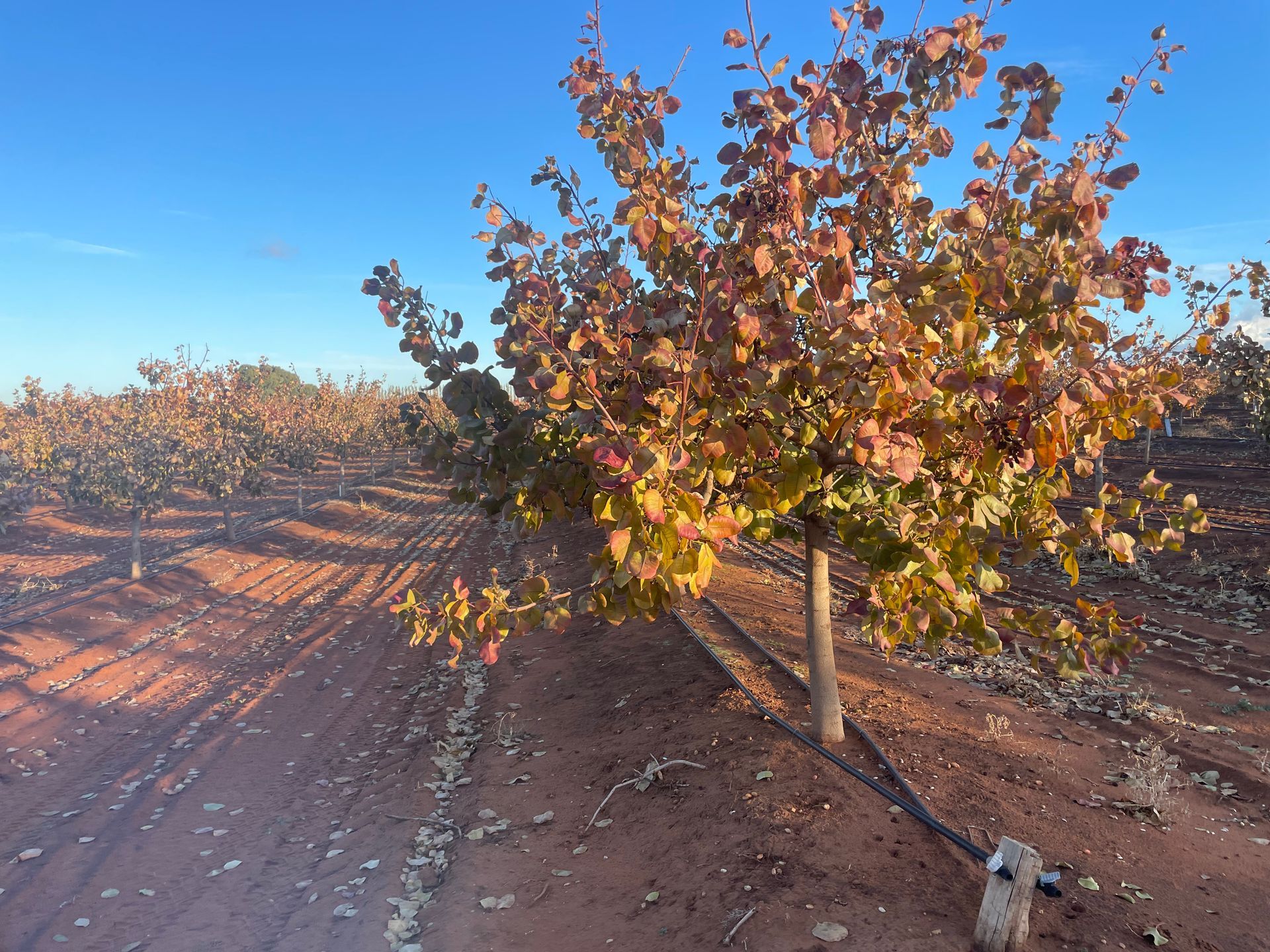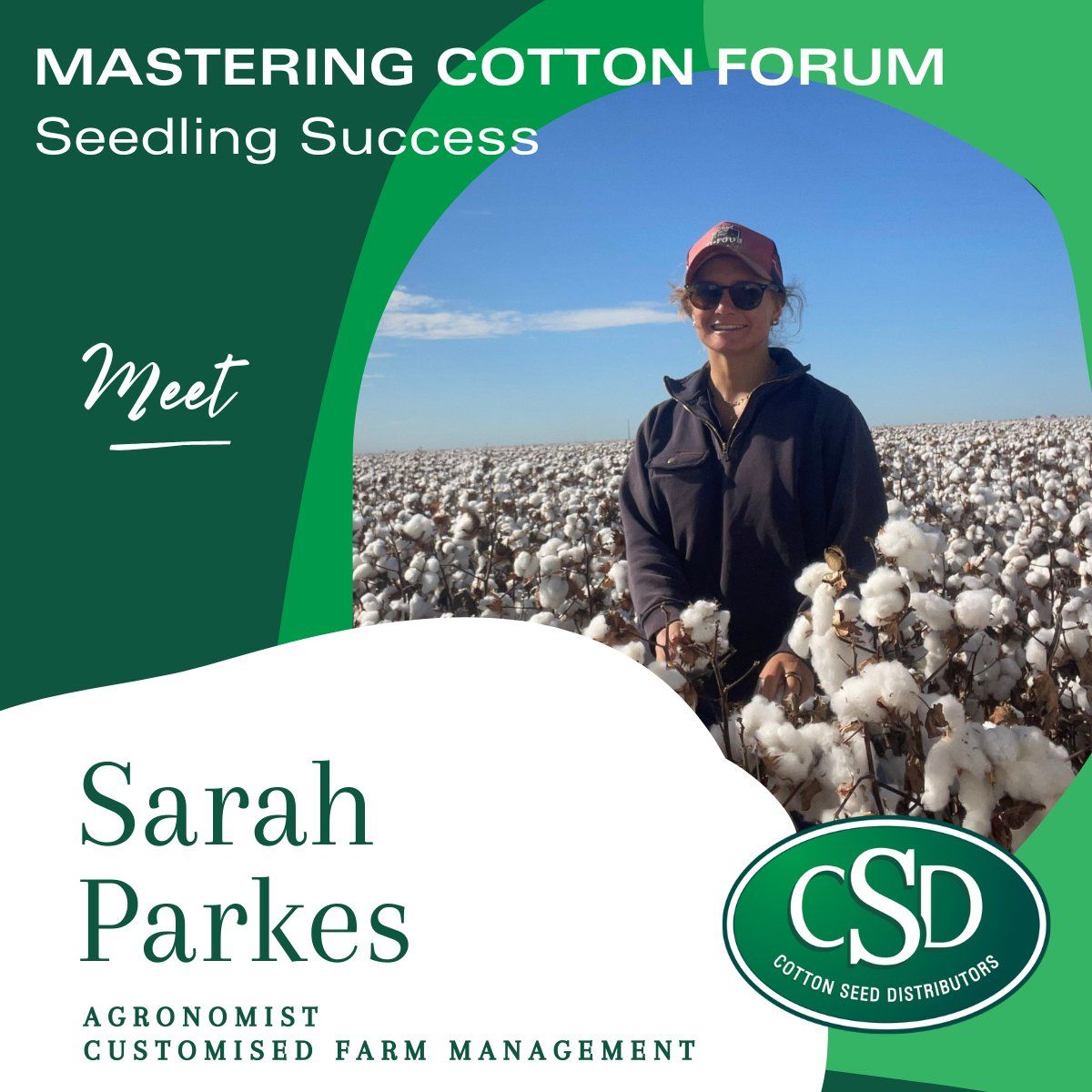Richard Malone Talks Carbon on the AgTech Finder Podcast
Article by Customised Farm Management
CFM's Richard Malone recently spoke to Olivia from AgTech Finder for their podcast on the use of Precision Ag services in relation to soil carbon opportunities. See the full interview below.
Olivia: Were now joined by Richard Malone from Customised Farm Management, who’s been using Precision Ag services across the group’s properties. Richard tells us about the potential opportunities he believes can be found in measuring and improving soil carbon, particularly in their horticultural developments.
Can you start by telling me more about CFM and yourself?
Richard: We’re a rural asset company with 11 farms under management from the Douglas-Daly region in the northern territory to the Riverina region. I’m based in Griffith, and our head office is in Moree, and I’ve been with customised farm management since 2016. Originally, I started my career as an agronomist and based down in Griffith at the time I was introduced to CFM.
Fantastic. So how have you used Precision Ag services? And why did you want to incorporate this into the operations?
Sure, I guess coming from an agronomic background, we’d been involved with Precision Ag for decades now and most of the assets we manage are broadacre focused so your typical cotton, wheat, cereals, oilseed rotations combined with some livestock and more recently horticultural as well, so in the broadacre space I guess you’d say we’ve been in the Precision Ag sphere for a long time now.
We took some of that knowledge from what we were doing in the broadacre so your typical base level NDVI maps and also the soil maps we were using in the cotton industry that would give you a representation of EM soil, and you overload that with some elevation and directional slope information that you can pull out of the tractors quite simply these days. It gave us confidence in our irrigation management of those crops and allowed us to really focus in on the average soil type for those fields. So, we were very much managing the majority of the crop on a field-by-field basis.
And did that change your irrigation decisions? Or the decisions on what you were putting out onto the paddock?
Yeah, it certainly did Olivia, it allowed us to confidently stretch irrigation deficits in soil types that allowed us to do so. It also allowed us to recognise that we needed to shorten up some of those deficits over time, and I guess use each millimetre of water that we had available more reliably in the system. Particularly in the drought years that became very important, water prices were almost prohibitive to grow any broadacre irrigation crops so the resources that we had available, we had to make sure we stretched it to its absolute maximum.
We’re also talking about soil carbon today, why is a soil carbon baseline something that you were looking at?
When we undertake any development as a management group, we do a really detailed soil reconnaissance survey. So that gives us a great understanding of the variability within the landscape were operating in. It also identifies more precisely the areas to target for a development and from a development perspective there’s big opportunity I believe in the carbon space because you’re effectively converting what would be traditionally dryland cereal production or semi irrigated cereal production country, in this situation to irrigated agriculture. And I think as farmers, that’s where we have an opportunity in the carbon space to make the most rapid change.
That’s interesting, and is that just because of going from the broadacre space to the horticultural space there’s more opportunity there for inputs into your soil or just the way you would manage them is more beneficial for increasing carbon, how’s that playing out?
Yeah, it is. In a Horticultural development for example, you have an enormous biomass production in a short period of time so the growth of the trees the plant biomass both above and below ground is quite significant so you’re adopting a fair bit of change to that environment in a short time with the addition of irrigation. But even going back prior to the development piece, you are adding things like cow manure, organic manure (chicken litter) and things like that on the development phase as well, all at very significant rates that would ultimately take you decades to achieve with cereal production on the same piece of dirt.
We understand that potentially this carbon space can provide marketing opportunities, but the main purpose were in interested in the space was to prove productivity of the assets under management as well.
So the dual purpose was to improve the productivity but also potentially one day provide market access.
It became more apparent, as a management company to really stand behind integral data. And so without the ability to have precision sampling techniques and understanding soil diversity within a landscape, you lose that integrity. So it is pivotal from our perspective that you need precision data to have integrity behind the data that you’re interpreting.
So would you say that carbon is one element of many when it comes to soil health and soil composition that you were looking at for overall production but then obviously it’s very handy to know where your soil carbon is at so you’ve got that idea if there were opportunities in the future when it came to accessing that market, would that be an accurate summary?
Yeah it is. And soil carbon as you pointed out is a small piece of a much larger puzzle for us in the precision ag space. We initially started sampling our Almond Orchards for example. And were talking orchards that were developed in the last 5 years so very fresh and immature in a sense to what you would consider a really productive orchard. I guess it was through that process that we also capture things like bulk density and also soil organic carbon in the process as well because it’s a bit of a free kick at the moment if you’re capturing that information when the trees are very juvenile.
So it’s very surprising, our expectations within an orchard are we might be able to improve soil organic carbon by about 0.1% per year. In fact, our first set of results have more than doubled that. We’re able to show that as an average across the sites within that orchard, 10 of the 12 locations tested were able to show an increase in soil organic carbon that increase was an average of about 0.2% so double what we expected it may be.
You look at that from a carbon perspective, that’s 5,400 tonnes of carbon dioxide sequested into the soil over that period, and at $60 per carbon credit value today it would be somewhere around $950 per hectare of additional opportunity for the orchard.
And you put that in context of the operating cost of the orchard, something like that would cover off about 30% of our annual overheads of operating that orchard.
So that’s a significant interest you could say. And it’s the sort of thing were really starting to hone into. And precision ag is really the only accurate way we can continue to accurately assess whether were improving or building organic carbon levels or there maintain a stable rate, or they’re in fact declining.
So as I’ve alluded to before, it’s very much a new space for us but the numbers are certainly something to get excited about in my view.
Now you try and get an understanding of what that means to an international customer or even a supermarket, where you can say that our soil organic carbon change has been accurately this over time, but we can also calculate what our emissions are on an annual basis as well. So, we can then enter the discussion about what is your carbon footprint across each kilo of almonds produced or each tonne of citrus produced.
So that’s the direction where heading as a business and as a management group in the horticultural space that we don’t think many people are operating in at this point in time.
Absolutely. Well its interesting because the independent baseline service that Precision Ag offer from my understanding you would have to get new baselines if you were to join a carbon program and start selling your carbon. But I can see that for a company it would be very useful to know what that is for reporting factors to stakeholders and then to the market potentially, would be in itself a big value and then obviously you’re having a better understanding of what value might be there if you decide to go down that road of selling carbon credits.
Yeah you’re right Olivia. A fortunate thing within our business is we get to talk to multiple stakeholders, some which that are involved in our business are actually foreign (international) owners, so they come from European and American backgrounds. Where I guess you would say the conversations around reduction in carbon emissions are much more topical on a daily basis than where they’ve been in Australia previously so you talk to those clients and stakeholders you get a quick understanding that they also are interested in where the opportunities potentially can take them.
But also, as importantly in their mind having a social accountability you could say for the production, they’re undertaking on the farms they own.
We also get to talk to likes of Woolworth’s, and the guys that buy for Woolworths, Coles Aldi and any major supermarket chains and it is becoming part of the conversation now with marketing fruit particularly, but also nuts and other commodities in the future.
So it would be remised not to be operating in that space at this point in time.



